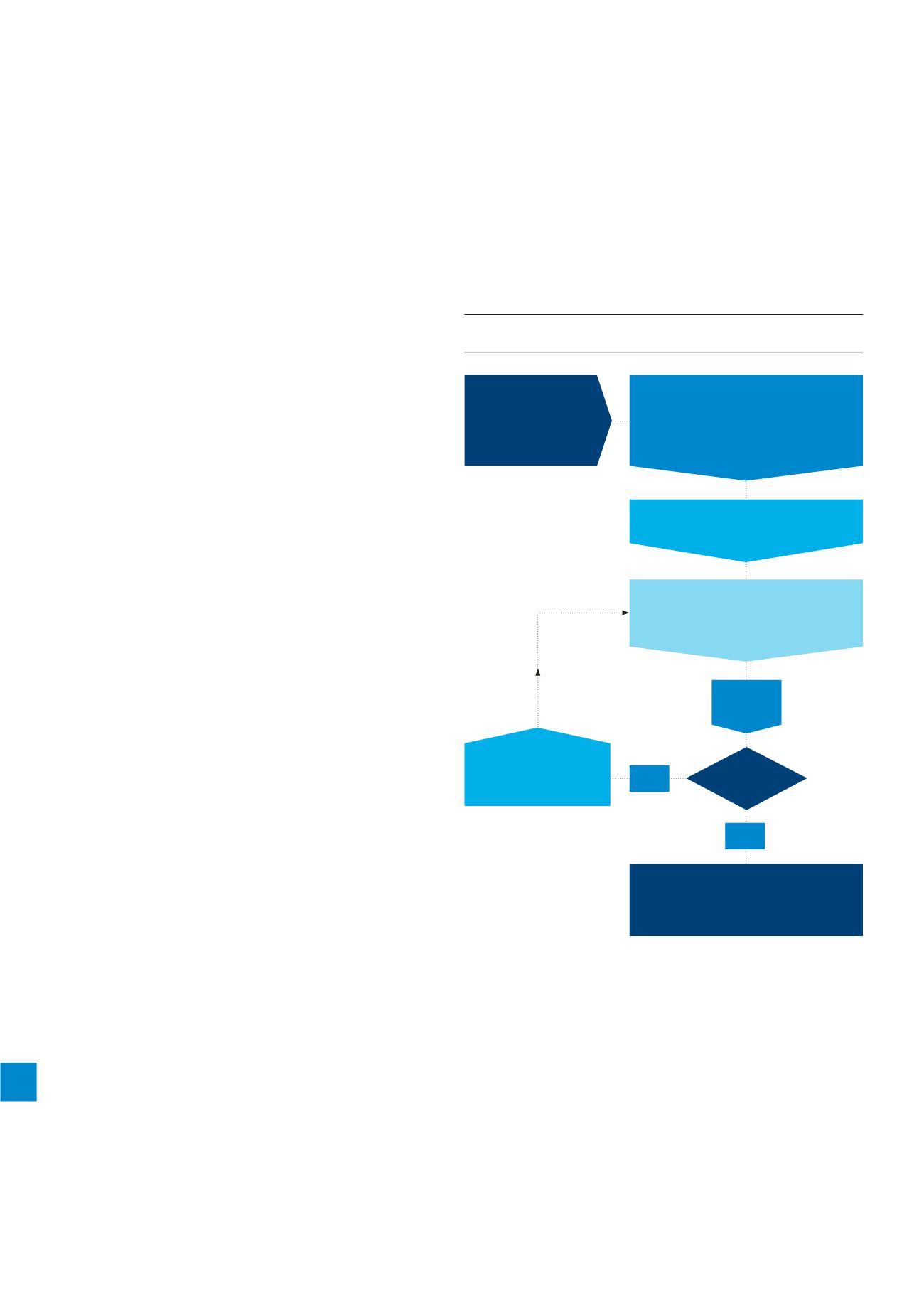

16/8
Total Solution to Earthing & Lightning Protection |
9AKK106354A3360
16
Identify the types of loss relevant to the
structure to be protected
R
n
– R
1
risk of loss of human life (including
permanent injury)
– R
2
risk of loss of service to the public
– R
3
risk of loss of cultural heritage
For each loss to be considered identify
the tolerable level of risk
R
T
Structure is adequately protected
for this type of loss
NO
YES
Calculate
R
n
= ∑ R
x
For each loss to be considered identify
and calculate the risk components
R
X
that make up risk
R
n
R
A
+
R
B
+
R
C
+
R
M
+
R
U
+
R
V
+
R
W
+
R
Z
StrikeRisk risk management software
An invaluable tool for those involved in undertaking the
complex risk assessment calculations required by
IEC/BS EN 62305-2, StrikeRisk facilitates the assessment of
risk of loss due to lightning strikes and transient overvoltages
caused by lightning.
Quick and easy to use, with full reporting capability, StrikeRisk
automates risk assessment calculations and delivers results in
minutes, rather than the hours or days it would take to do
the same calculations by hand. Contact Furse for more details
about StrikeRisk.
Technical reference
IEC/BS EN 62305-2 - Risk management
IEC/BS EN 62305-2 specifically deals with making a risk
assessment, the results of which define the level of Lightning
Protection System (LPS) required. While BS 6651 devoted 9
pages (including figures) to the subject of risk assessment,
IEC/BS EN 62305-2 currently contains over 140 pages.
The first stage of the risk assessment is to identify which of
the four types of loss (as identified in IEC/BS EN 62305-1) the
structure and its contents can incur. The ultimate aim of
the risk assessment is to quantify and if necessary reduce the
relevant primary risks i.e.:
––
R
1
risk of loss of human life (including permanent injury)
––
R
2
risk of loss of service to the public
––
R
3
risk of loss of cultural heritage
––
R
4
risk of loss of economic value
For each of the first three primary risks, a tolerable risk (
R
T
) is
set. This data can be sourced in Table 7 of IEC 62305-2 or
Table NF.1 of the National Annex of BS EN 62305-2.
Each primary risk (
R
n
) is determined through a long series of
calculations as defined within the standard. If the actual
risk (
R
n
) is less than or equal to the tolerable risk (
R
T
), then no
protection measures are needed. If the actual risk (
R
n
) is
greater than its corresponding tolerable risk (
R
T
), then
protection measures must be instigated. The above process is
repeated (using new values that relate to the chosen
protection measures) until
R
n
is less than or equal to its
corresponding
R
T
.
It is this iterative process as shown in Figure 5 that decides
the choice or indeed Lightning Protection Level (LPL) of
Lightning Protection System (LPS) and Surge Protective
Measures (SPM) to counter Lightning Electromagnetic
impulse (LEMP).
IEC/BS EN 62305-2 is key to the correct implementation of IEC/BS EN 62305-3
and IEC/BS EN 62305-4. The assessment and management of risk is now
significantly more in depth and extensive than the approach of BS 6651.
Figure 5. Procedure for deciding the need for protection
(IEC/BS EN 62305-1 Figure 1)
Identify the structure
to be protected
Install protection
measures in order
to reduce
R
n
R
n
≤ R
T


















